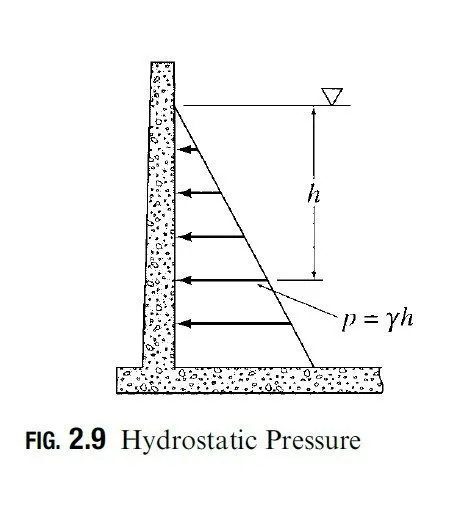Structures used to retain water, such as dams and tanks, as well as coastal structures partially or fully submerged in water must be designed to resist hydrostatic pressure. Hydrostatic pressure acts normal to the submerged surface of the structure, with its magnitude varying linearly with height, as shown in Fig. 2.9. Thus, the pressure at a point located at a distance h below the surface of the liquid can be expressed as
in which y = unit weight of the liquid. Underground structures, basement walls and floors, and retaining walls must be designed to resist soil pressure. The vertical soil pressure is given by Eq. (2.13), with g now representing the unit weight of the soil. The lateral soil pressure depends on the type of soil and is usually considerably smaller than the vertical pressure. For the portions of structures below the water table, the combined efect of hydrostatic pressure and soil pressure due to the weight of the soil, reduced for buoyancy, must be considered.
